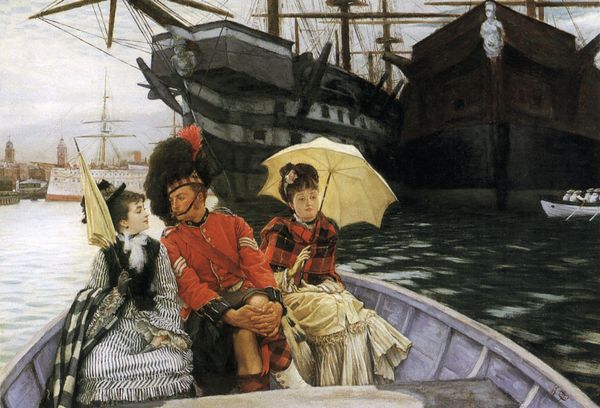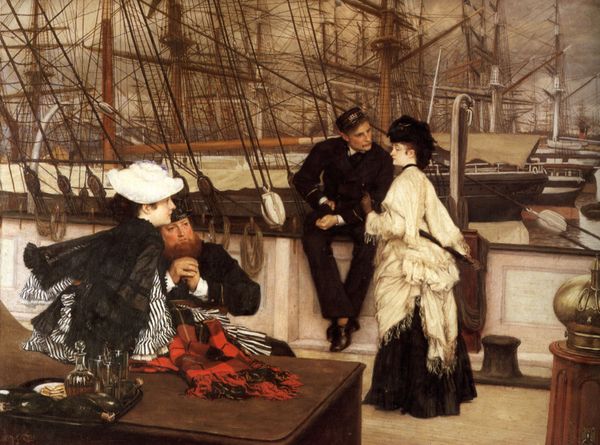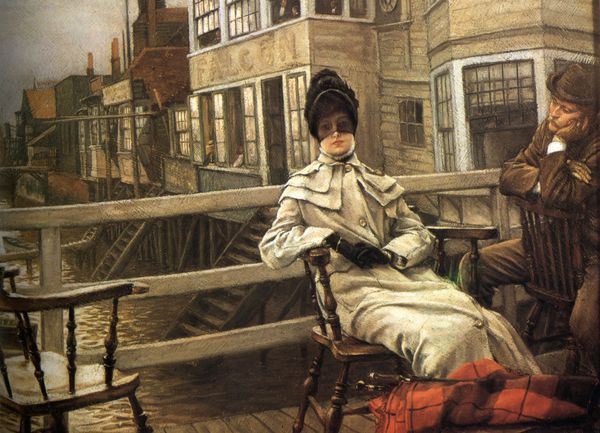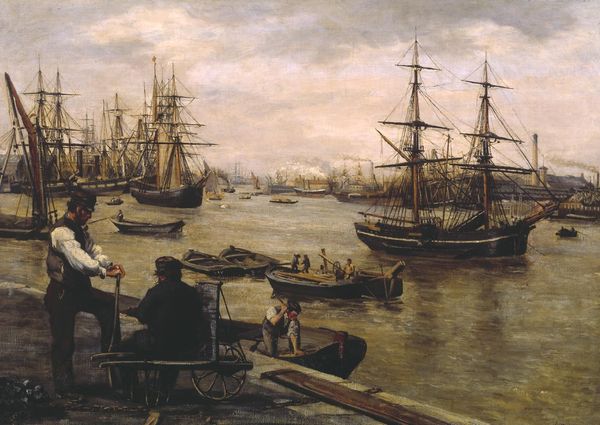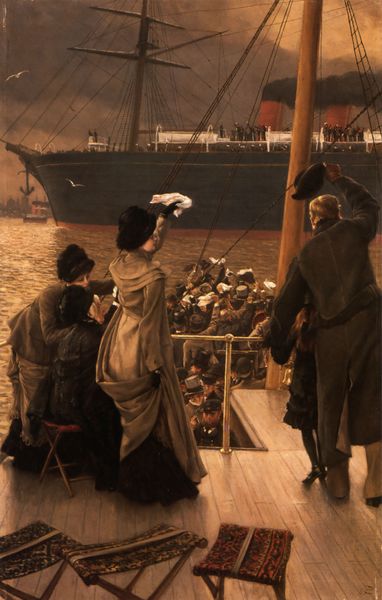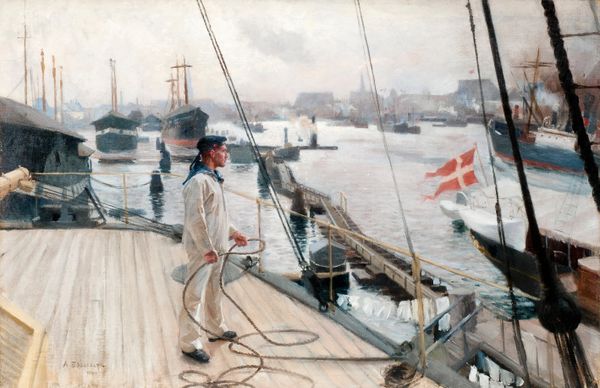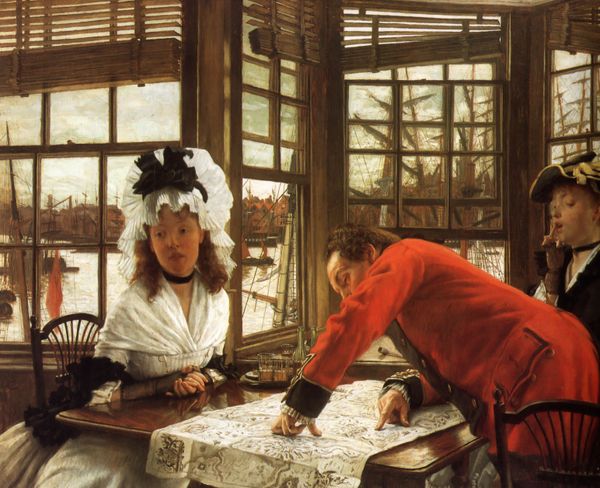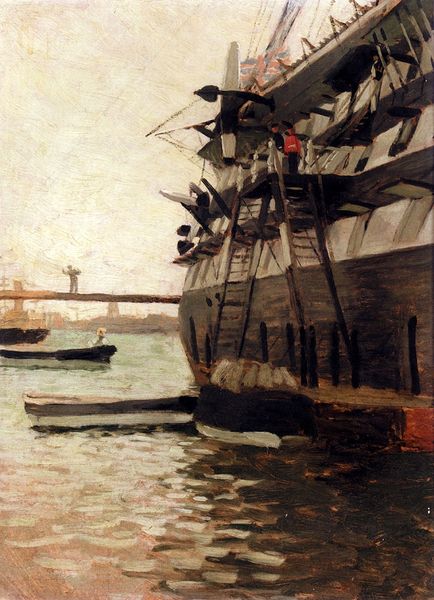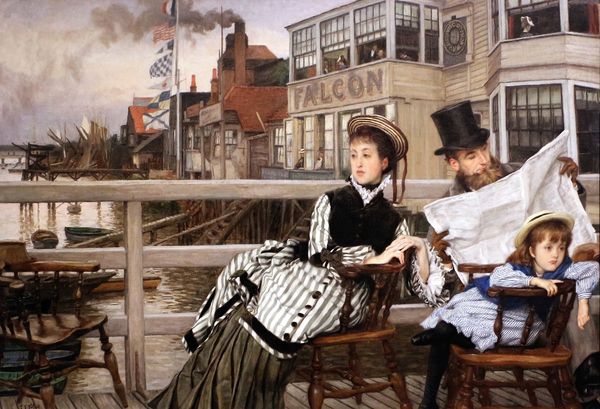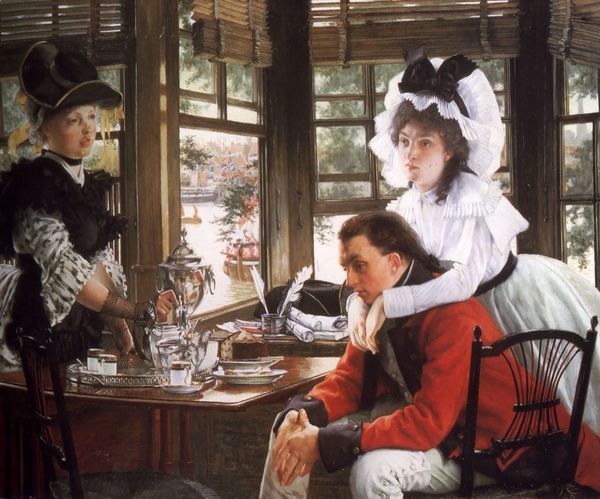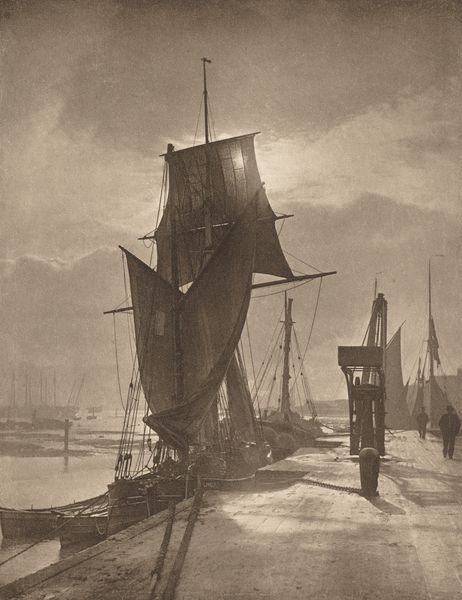
Dimensions: 118 x 72.5 cm
Copyright: Public domain
Curator: James Tissot painted "The Thames" in 1876, an oil on canvas piece that presents a glimpse into Victorian leisure. Editor: The materiality here is interesting, especially the way he's rendered the water and steam. There's almost a tension between the visible brushstrokes and the overall realistic, almost photographic, composition. What was the labor context like? Were works of this scale commonly produced? Curator: At this scale? Absolutely, but perhaps not with this subject matter. Genre painting and cityscapes experienced considerable growth throughout the mid-19th century, largely because of its expanding merchant class, the group Tissot found as willing art patrons. He needed that revenue, particularly because he found himself shunned back home in France for his association with the Paris Commune, causing his exile in London. Editor: The texture of those ships in the background… How were these built? The black smoke shows its intense production but with an economic hierarchy present in the foreground. Curator: You see the rigid class structure right? Here we find them on a leisurely river tour, removed from the toil and grime suggested in the shipyards and docks. London was the capital of world trade in the 1870s, which of course allowed a wealthy elite to benefit from raw materials taken by colonized peoples throughout the empire. Editor: True, but I'm equally fascinated by his rendering of the animals – a pug and a terrier. Even the dog looks bourgeois, lying on those fine fabrics! This also tells me about production. Curator: Right. Animals began being prominently featured in fine art around the mid 19th century, perhaps signifying increased sentiments of endearment, though not by all—animal cruelty was fairly rampant around this time. He paints it as fashionable which makes sense when considering London society’s obsession with pets in portraiture. It becomes a status symbol. Editor: Well, seeing this contrast between raw industrial labor versus refined luxury tells an immediate story about what went into it, especially concerning the value attributed to the Thames river as both industrial waterway and site of leisured consumption. Curator: Definitely something to reflect upon, particularly in our modern context of consumerism.
Comments
No comments
Be the first to comment and join the conversation on the ultimate creative platform.
